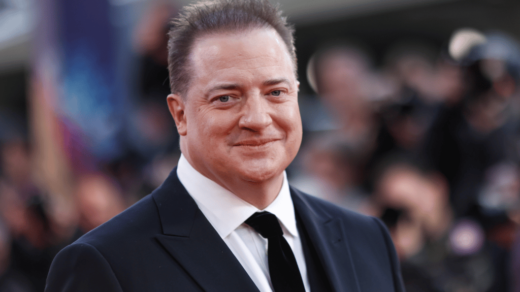In ‘Tahara,’ a Black Queer Jewish Teen Tackles Grief and Toxicity
Tahara, a coming-of-age drama that screened at this year’s Outfest, shows a rare perspective in cinema: a Black queer Jewish teen’s.
Directed by Olivia Peace and written by Jess Zeidman, the film follows Carrie (Madeline Grey DeFreece) as she processes the death of a classmate with other members of her Hebrew School, as well as her longtime (and toxic) relationship with Hannah (Shiva Baby’s Rachel Sennott).
Below, Peace discussed Tahara with The Advocate, and its themes of grief, religion, race, and friendship.
It’s so rare to see Black queer Jewish women centered like this in film. What did it mean to you personally to bring this representation to the screen?It was pretty much a non-option to me. Though it’s rare in cinema, I knew a fair amount of Black Jewish people and queer Jewish people growing up where I’m from. I was pretty surprised to find out through the making of this film, that a lot of people thought of Jewishness as this very homogenous experience. The teenage experience that I know best, is one of being a Black queer person who occasionally finds oneself in predominantly white heterosexual spaces. And that was what drew me to Carrie’s character from the jump.
One of my first conversations with Jess was about how it was essential to me that we show Jews of Color in this film and Jess agreed. Our casting director, Noa Isabella, did a phenomenal job of reaching out to incredibly talented people for our lead roles and we got so lucky with landing Madeline Grey DeFreece and Rachel Sennott.
There’s a rapidly shifting social hierarchy that exists within this Hebrew School. What commentary did you want to make about how stigma toward race and sexuality impacts this hierarchy?My main experience with stigma has to do with people feeling too afraid to engage with people with “difficult” identities (mainly Blackness, queerness, disability etc.) lest they say the wrong thing and expose themselves as a bigot. And this is a movie where people just scene after scene are forced into situations in which they say the wrong thing and are forced to really reckon with it.
In Tahara, a lot of the social hierarchy has to do with who can best adapt to the scenario that they’re given. And the person who’s most quickly able to adapt from scene to scene is Elaina (played by the legend, Shlomit Azoulay). Part of the fun of the film is watching her navigate this kingdom that she resides over in Hebrew School. Oftentimes, these religious spaces that we find ourselves in during childhood and early adolescence are not chosen, and because of that we often have these long-term acquaintances that we acquire over time.
It’s interesting, we have this long detailed backstory for the friendship of Hannah and Carrie, all these pictures, and this shared culture, but despite this, Hannah still asks Carrie whether or not she might have concealer that she can use.
The plot is set in motion by the suicide of a queer teen, Samantha. What were the challenges of depicting such an emotional subject matter, particularly when humor is involved?I think that Jess’ script does a lovely job of balancing difficult moments with humor. From there, our whole cast did a great job of lending us their improv jokes on set and I think we captured some really great moments from that. One awesome moment comes from Melissa’s character, played by Jenny Lester where she’s just frantically rattling off this completely improvised soliloquy about her Bubbie and the school dance and I think that moments like that were such magic. From there, our editor Troy Lewis did a great job of pacing out those funny moments so that they would really hit, but not overpower the emotional resonance of important scenes. I felt really strongly about not overpowering Samantha’s presence in the film. We wanted to be sure that people were laughing at the absurdity of the situations, as a bit of tension relief but never disrespecting the heaviness of the subject matter. Having time to try things out in the edit and sending half done pieces off to trusted friends really helped us catch our stride for the final cut.
In Tahara, we see how death sparks a performance in many people; some act sad when they had little connection to the deceased or were even complicit in her passing. Do you believe more honesty is healthy during bereavement, even when it’s blunt, or is this act also a necessary part of the ritual?Mmm good question. I’ve been thinking about grief a lot — so much is changing around us right now, it feels appropriate that we should be grieving the old lives we had. I’m pretty convinced though that we have no idea how to sincerely grieve, which makes everything all the harder.
I just finished bell hooks’ book All About Love, about a week ago and I’m obsessed with it. In one of the chapters, she talks about love in death and says that “To be loving is to be open to grief, to be touched by sorrow, even sorrow that is unending. The way we grieve is informed by whether we know love.”
I think that the only person in the entire movie that loved Samantha was her mother, which is why when she was placed in a scene with Hannah and Carrie, they didn’t have a clue of how to even interact with her. Often grieving with sincerity will place you out alone on an island away from others who would rather go with their simple prescribed scripts than stand in their truth.
How can faith — Judaism, in particular — help with grief?I learned so much about the Jewish burial process through this film, and one of the things that I really loved about it was how much emphasis was put on comforting the family. From keeping funeral arrangements simple, to making sure that people don’t have to reach out for company, to making sure that the family consistently has meals. I think that too often, as bereaved people, we also get tasked with telling people how to help us, which can be detrimental to the grieving process.
Carrie and Hannah have a very complicated friendship; its lifelong and meaningful but also unrequited and toxic. Have you ever had to sever an important relationship due to toxicity?I absolutely did and it felt like a death at the time, to be honest. I’d find myself collecting things to share with this person who was no longer in my life only to immediately realize that I could no longer reach out to them. What’s weird nowadays though is that, unlike in the past when you might break up with a friend and only sometimes suffer the occasional awkward run-in with them at the grocery story during holidays in your hometown, now social media makes ghosts of us all. Suddenly we’re in the age of 24-hour individual news coverage, and there goes your best friend living life without you, in real-time as you scroll from the comfort of your own home.
If you’ve broken up with anyone, friend or otherwise, please I am begging you — no matter how cool you might think yourself to be — block them. Block them and do not look back. We’re made to feel weak for still feeling pangs of grief that linger on past an appropriate time, but I’ve found that losing contact with someone who once knew you really well is something that you might grieve forever. And that’s alright. Let’s change the narrative. Cool people block their ex-best friends.
A lot of pivotal scenes occur in the girls’ bathroom. In film and in real life, what is the power of this setting in engendering conversation and intimacy?Wow, I love these questions! So our screenwriter and producer Jess Zeidman is the genius that set so many scenes in the bathroom, or the ~ladies’ lounge~ as it became known in the script. I love those scenes so much because, as a teenager and otherwise, women’s bathrooms function as these sort of alternate spaces that are shielded in a way from some of the rules and realities of the world outside it. A lot of gossip happens in there. A lot of random bonds are formed in there. And in our film, a lot of friendship make-or-break moments happen in there.
And as a teenager especially, when you have so little agency about where you can go or what you have to do, the bathroom becomes a hideaway where you can go to just pass the time and act silly for a bit without having to perform a way that you’re “supposed” to be.
One of my favorite shots is the one where Carrie and Elaina come back from the bathroom laughing and you just see Hannah deflating watching them in the foreground. Those bathroom friendships can be really intense.
It’s so fun to see the animation and Claymation throughout the film. How did you set out to use these techniques to enhance your story?While in film school, I actually learned how to direct by teaching myself how to animate first. It seemed a lot less daunting at the time to figure out the basics of cinema like “shot,” “reverse shot,” or sound design as an animator on my own, than to dive into leading a cast and crew. So, everything I’ve ever made has animated elements in it.
For this project though, I knew that it would be important to hire on someone else to do the animation so that I could focus on getting through the edit. So I hired on my friend Emily Ann Hoffman who made the clay puppet animations as well as those incredible psychedelic rotoscoped sequences. From the beginning, I told her that I wanted Hannah and Carrie’s inner desires and imaginations to be portrayed by very different animation styles.
We settled on Carrie having the three-dimensional inner life and Hannah having the more colorful flat one. From there, Emily partnered with the amazing studio Mighty Oak where she worked on the clay puppets and shot the animated kiss scene. Our team has crew members from all over, so even before the quarantine, I would be getting Facetimes from Emily showing me how things were turning out on set. I learned a lot from getting the chance to work with her.
This is your first feature film. What did you love (and not love) about the experience?This film was truly an independent project. Not just in terms of aesthetics, but yeah our iconic cinematographer Tehillah, made our film look rich with 1.5 lights to her name. There were many times though where I really wish we’d had a bigger budget to help lighten the load on set. Something I regret everyday was not hiring a set photographer. Nevertheless, we made something very special with very limited resources and I’m so proud of my friends for making that happen.
I think one of my favorite things, was stumbling upon my original pitch deck that I made back in January of 2019 and realizing that I’d planned so much for this film, and most of those long-forgotten ideas had actually managed to come through.
The Black Lives Matter movement has awakened many to the need for change in every facet of life. How can Hollywood do more to rise to the moment?I’m working on making an artist’s collective called Indefinite Village right now. We’re an accessible community and makerspace for artists to incubate, test, and discover creative projects. We are a staunchly pro-Black, anti-ableist, and ecofeminist org and I actually do believe that this type of decentralized art-making model is the future.
Hollywood has its things that it’s good at, and sometimes it’s cute. I’m just doing something different.
[embedded content]
Original Article on The Advocate
Author: Daniel Reynolds




